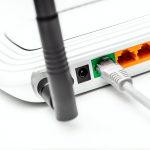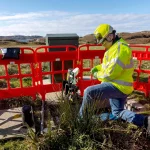Study Examines Impact of Solar Storms on Starlink Broadband Performance

A new study from a team of three researchers working out of the University of California (USA) has taken a “deep dive” into the impact of solar storms on Starlink’s global network of ultrafast broadband satellites in Low Earth Orbit (LEO). The results uncovered some “previously overlooked patterns” of vulnerability and suggest that “more adaptive, region-aware mitigation strategies” may be needed.
The Starlink constellation currently has around 8,990 satellites in orbit (c.5,470 are v2 / V2 Mini) – mostly at altitudes of c.500-600km. Residential customers in the UK usually pay from £75 a month, plus £299 for hardware (currently free for many areas) on the ‘Standard’ unlimited data plan (kit price may vary due to different offers) directly from Starlink, which promises UK latency times of 26-33ms, downloads of 116-277Mbps and uploads of 17-32Mbps. Cheaper, albeit more restrictive (data capped), options also exist for roaming users (e.g. £50 per month for 50 GigaBytes of data).
Prior studies have confirmed that such networks do suffer a “modest but noticeable impact” on their performance during solar storms (when intense solar wind interacts with Earth’s magnetosphere). This typically manifests as an immediate rise in packet loss and a sustained increase in round-trip time (RTT / latency).
Advertisement
Such radiation can sometimes damage satellites, not only directly but also by spawning shifting currents and plasmas, which may cause the atmosphere to warm a little and atmospheric density to increase. In order to mitigate against the risk that this may stress related hardware systems and affect satellite trajectories (in extreme cases it may even result in satellite loss), SpaceX will often raise the altitude of their satellites a bit to avoid the extra drag. But these satellites will usually return to their original altitude within 1–2 days.
The new study (credits The Register) investigates how atmospheric drag from geomagnetic disturbances affects different parts of the LEO constellation during such events, and in turn, network performance. The study notes that the corrective action SpaceX takes triggers a “cascading effect“, with orbital adjustments propagating across neighbouring satellites in both spatial and temporal dimensions.
“Full stabilization of the orbit often takes 3–4 days. These dynamic adjustments can disrupt satellite links and routing paths, contributing to performance issues such as a sustained increase in round-trip time (RTT),” said the report.
Study Findings
By localizing the impact of increased atmospheric drag at the level of individual satellites and orbits, we reveal significant heterogeneity in how different parts of the network are affected. We find that the degree of performance degradation varies significantly across geographic regions, depending on satellite positioning during the storm.
Specifically, we find that (i) not all satellite orbits are equally vulnerable, (ii) within a given orbit, certain satellites experience disproportionate impact depending on their position relative to geomagnetic conditions, and (iii) autonomous maneuvering of satellites might be a cause of the sustained increase in RTT.
Our findings uncover previously overlooked patterns of vulnerability in LEO satellite constellations and highlight the need for more adaptive, region-aware mitigation strategies to address space weather-induced network disruptions.
However, while the study doesn’t really provide much data in terms of the performance impact, it does look as if the negative impacts are fairly small in the sense of their impact upon real-world usability (i.e. you might not even notice it). Crucially, Starlink also kept operating during several of the examined solar storm events, although we would have liked to know if there was any impact on data speeds too etc.
Advertisement
While this study focuses on Starlink, which has the largest LEO constellation currently in operation, the methodology can also be extended to analyse other similar networks, such as OneWeb (Eutelsat) and Amazon Leo (formerly Kuiper).
Mark is a professional technology writer, IT consultant and computer engineer from Dorset (England), he also founded ISPreview in 1999 and enjoys analysing the latest telecoms and broadband developments. Find me on X (Twitter), Mastodon, Facebook, BlueSky, Threads.net and Linkedin.
« Virgin Media UK and Nexfibre Build Full Fibre to 6,000 Homes in Ripon






















































Privacy Notice: Please note that news comments are anonymous, which means that we do NOT require you to enter any real personal details to post a message and display names can be almost anything you like (provided they do not contain offensive language or impersonate a real person�s legal name). By clicking to submit a post you agree to storing your entries for comment content, display name, IP and email in our database, for as long as the post remains live.
Only the submitted name and comment will be displayed in public, while the rest will be kept private (we will never share this outside of ISPreview, regardless of whether the data is real or fake). This comment system uses submitted IP, email and website address data to spot abuse and spammers. All data is transferred via an encrypted (https secure) session.